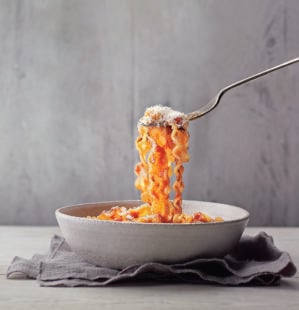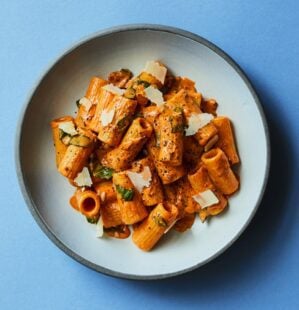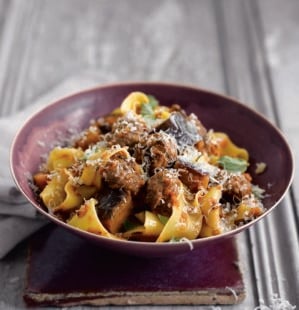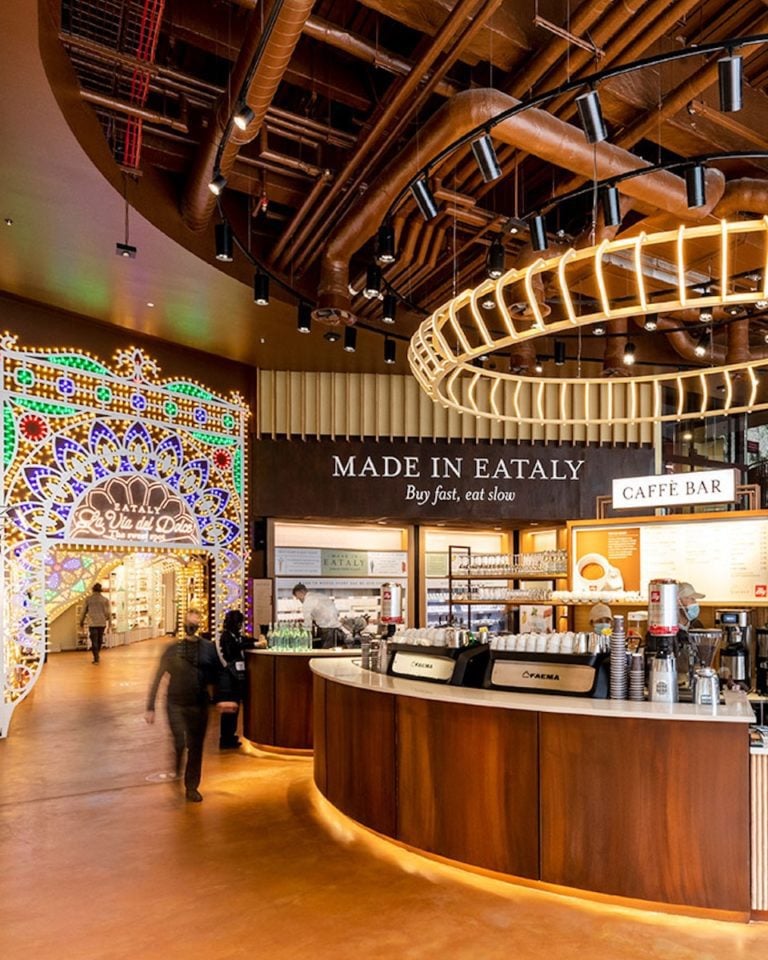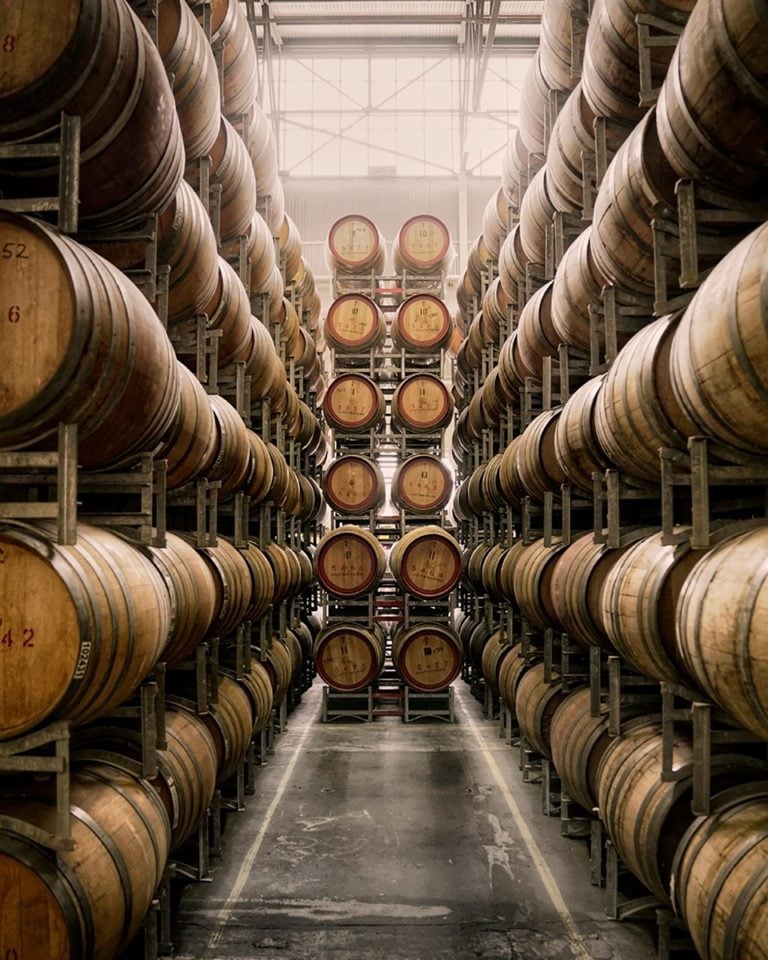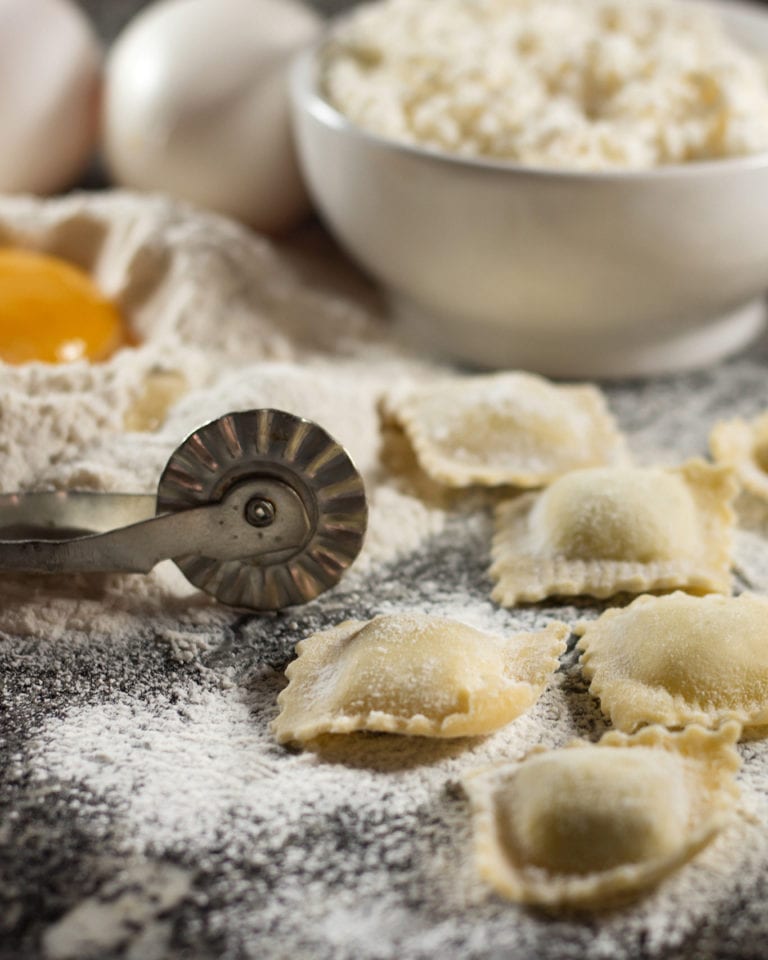Behind the scenes: artisan pasta at the Rustichella d’Abruzzo pasta factory
Italian pasta is a commodity that most of us eat every single week and it’s easy to take it for granted. But have you ever thought about the work that goes into the production of your bowl of linguine or rigatoni? We stepped into the Rustichella d’Abruzzo factory in central Italy to find out how the 100 year-old company make their exceptional product…
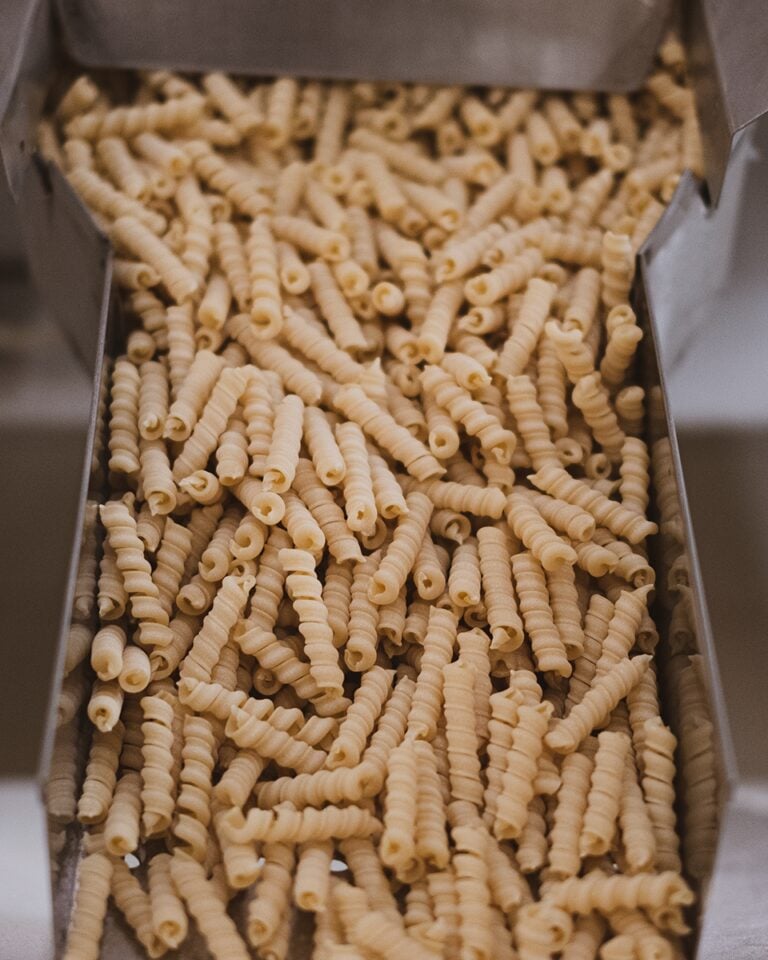
The road to artisanal pasta
I first discovered Rustichella d’Abruzzo’s pasta in an Italian supermarket in Melbourne, Australia, where its brown paper packaging and impressive range of shapes drew my attention. Ten years later, and I daren’t think how many kilos down, I’m still convinced it’s the best artisan pasta out there. So I was over the moon when I got to visit the pasta factory (or pastifico in Italian) in Abruzzo, on the Adriatic coastline. This lesser known region is a two hour drive east of Rome and has a rugged mountainous terrain, and few tourists. While driving up the landscape’s winding, lush hills on the approach to the factories, it’s instantly clear that this product is from a special place.
Rustichella d’Abruzzo was born out of a town called Penne, so you have to hand it to the company that they must know a fair amount about pasta. The business operates out of two factories: one at Moscufo, in which they make their durum wheat pasta and another near the town of Pianella where the egg pasta has been made since 2020. In total, they produce over 200 shapes of pasta, from conchiglioni and fusilli col buco to Abruzzo’s regional pasta chitarrone (so called because it’s traditionally made by being pushed through an instrument with strings, reminiscent of a guitar or chitarra – as you might have seen being done by chefs and nonnas on Instagram).
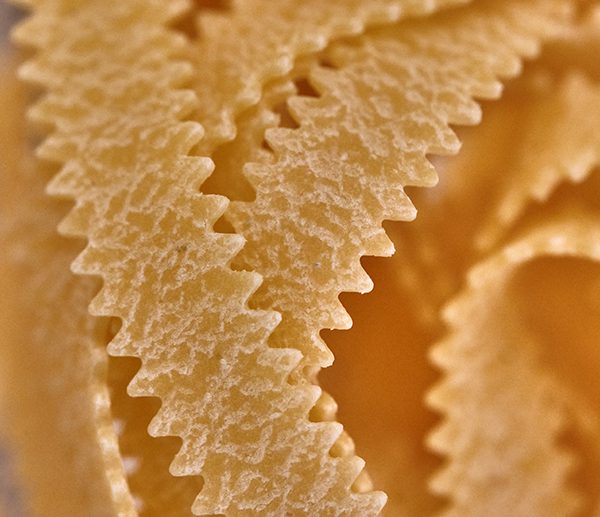
The family-owned company produces an amazing 12,000kg pasta each week, which sounds like an enormous amount. But a year of Rustichella d’Abruzzo’s pasta production is actually equivalent to just 2 days production at some big brand pasta giants, which puts the scale into context. Here, the entire pasta project is about texture and quality, rather than producing at scale, with spring water coming from the Apennine mountains and the wheat being ground by stone.
How they do it
The first thing you notice when you don your hair net to walk onto the factory floor is that pasta production is hot work: the environment is extremely warm and humid. The pasta making process begins the same way, whether it’s egg or durum wheat pasta being made. At the top of the production plant (the warmest location in the building) the semolina and water or semolina and eggs are mixed in industrial mixers until the desired amount of gluten is formed.
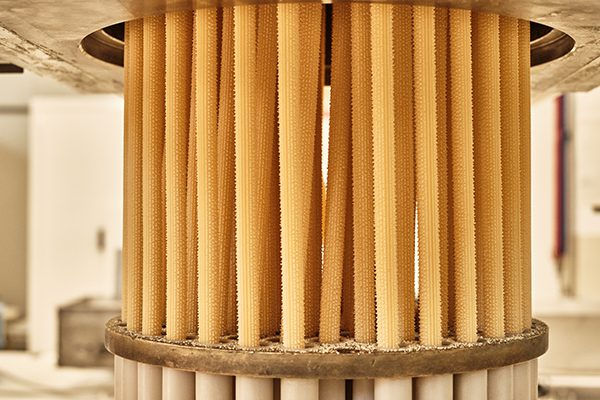
Next, the dough is pushed and rolled out into sheets, which then go through a bronze die extrusion. This process embosses a texture onto the pasta which makes it especially good at holding onto sauce. Each shape is cut using the bronze die cutters, which are horizontal and long for the long pasta shapes, and round like a clock for the short pasta shapes. These cutters are the jewel in the company’s crown, and have been used for decades.
Once cut, the pasta makes its way along the production line on a mesmerising conveyor belt where it will undergo a two-step drying process. This slow, methodical process sees the pasta dried at low temperatures, and it’s what marks Rustichella d’Abruzzo pasta out as artisanal. Each pasta shape has its own recipe for drying it at the optimum humidity and temperature. The shapes are all pre-dried for one hour, with the second dry being variable depending on the type. It could be between 16-24 hours for egg pastas and between 24-72 hours for durum wheat pastas.
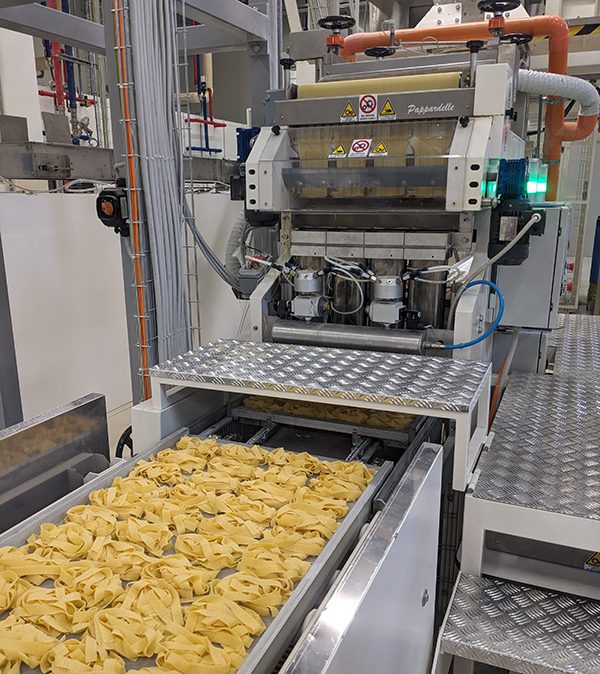
The pasta is then weighed and packaged (by a machine for the durum wheat pasta and by hand for the egg pasta), then labelled and stamped with its weight, batch number, barcode and all the details needed for the country it will be exported to.
Rustichella d’Abruzzo has automated the more monotonous parts of the labour so that the team can pay attention to the most fun and important bits: testing, research and development and quality control. A sample of every batch of pasta is tested for humidity, then cooked and eaten to ensure it behaves as the quality controllers expect.
As well as pasta, the brand sells organic farro which is processed and packaged nearby by a small scale producer that’s been working with the ancient grain since the 1990s (before it was cool). Rustichella d’Abruzzo makes and sells a range of pasta sauces and its adding to its catalogue all the time, including with colourful pastas in shades you’ve never tried before: think blue and green paccheri and pink and orange spaghetti. The brand exports to over 70 countries, with its biggest market being the US, and the pasta is used in hundreds of restaurants.
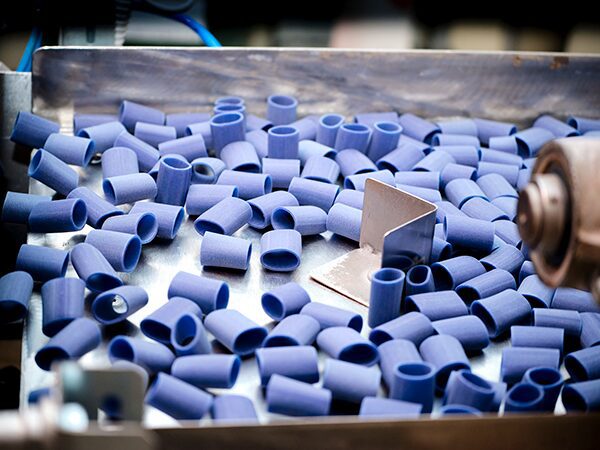
Where to buy in the UK
All that talk about pasta has probably got you wanting to eat some. We love Rustichella d’Abruzzo for its ability to cling on to sauce and for its satisfying chew. In the UK, you can buy it from Odysea and from many small independent delis. Check out all our pasta recipes here.
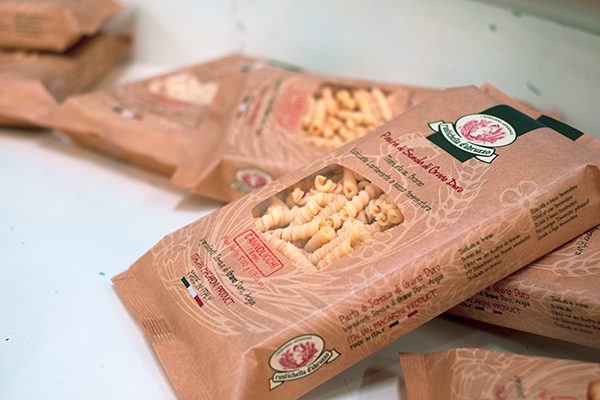
Subscribe to our magazine
Food stories, skills and tested recipes, straight to your door... Enjoy 5 issues for just £5 with our special introductory offer.
Subscribe
Unleash your inner chef
Looking for inspiration? Receive the latest recipes with our newsletter
